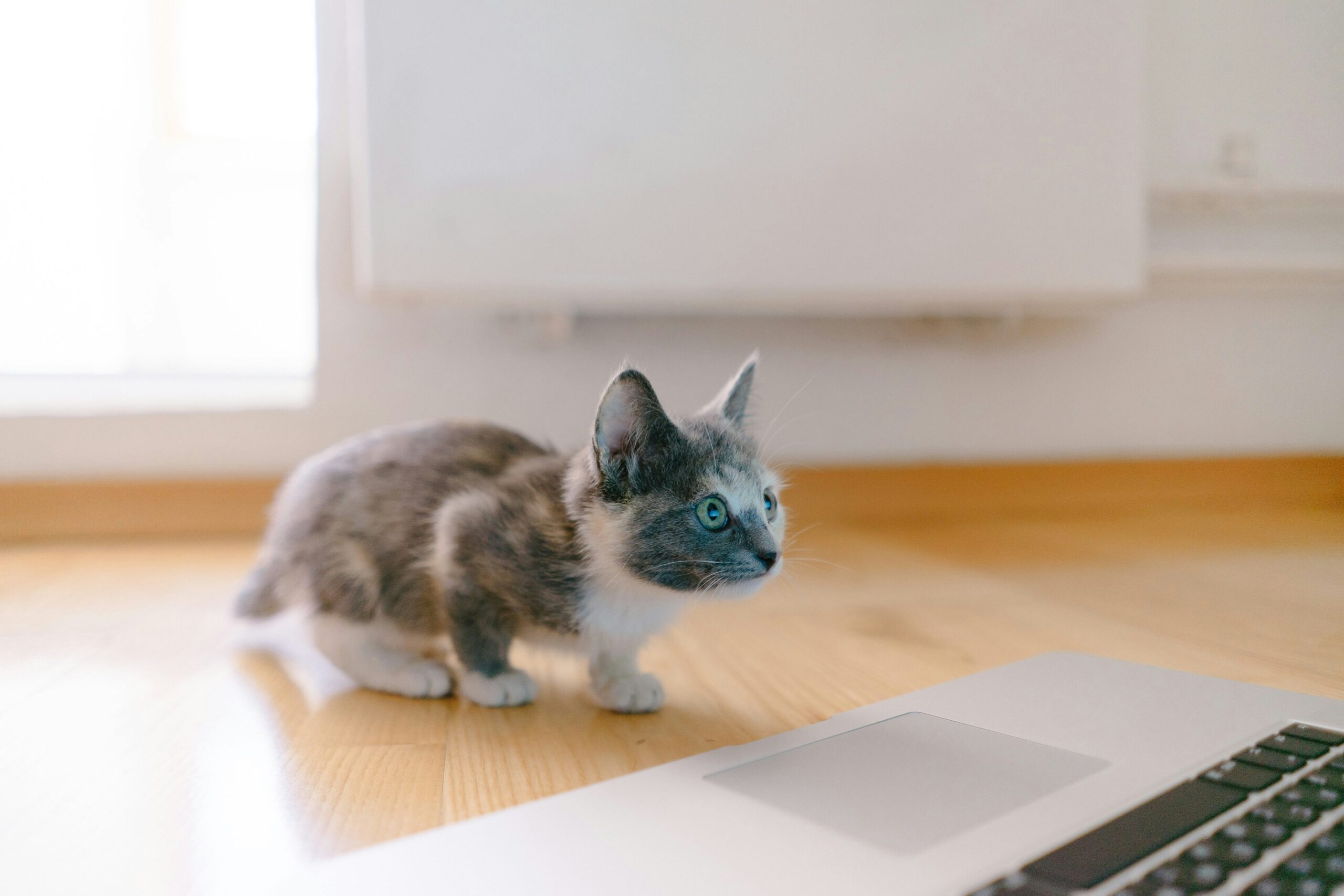Choosing the right fresh cat food for your feline friend can significantly impact their health and vitality. With a myriad of options available, understanding your cat’s unique nutritional needs is crucial. Fresh cat food offers a range of benefits, from improved digestion to shinier coats, making it a popular choice among pet owners. By considering key ingredients, debunking common misconceptions, and consulting with your veterinarian, you can ensure that your cat receives a balanced diet. Ultimately, selecting the right fresh cat food sets the foundation for a long, happy life for your beloved companion.
Understanding Your Cat’s Nutritional Needs
When it comes to choosing fresh cat food, it’s essential to understand your feline friend’s specific nutritional requirements. Cats are obligate carnivores, meaning they thrive on a meat-based diet. Therefore, their food should primarily consist of:
- Proteins: Look for high-quality protein sources like chicken, turkey, or fish.
- Fats: Healthy fats, such as Omega-3 and Omega-6 fatty acids, support skin and coat health.
- Vitamins and Minerals: Ensure the food contains essential vitamins (A, B, D) and minerals (calcium, phosphorus) for overall well-being.
- Water: Fresh cat food, particularly in a wet form, helps keep your cat hydrated.
Additionally, consider your cat’s age, weight, and activity level, as these factors influence their dietary needs. A senior cat may require fewer calories but more fiber, while a playful kitten needs a food high in protein and energy.
By focusing on these aspects, you can select the right fresh cat food that meets your cat’s unique dietary requirements and promotes a healthy, happy life.
Different Types of Fresh Cat Food
When it comes to fresh cat food, options abound, each catering to different needs and preferences. Here’s a closer look at the main categories:
Raw Fresh Cat Food
- Made from uncooked meats, organs, and bones.
- Advocates claim it mirrors a cat’s ancestral diet.
- Requires careful handling to avoid bacterial contamination.
Cooked Fresh Cat Food
- Prepared using safe cooking methods.
- Often includes whole meats, vegetables, and grains.
- Easier for some pet owners to digest and store.
Dehydrated Fresh Cat Food
- Contains raw ingredients that are dehydrated for preservation.
- Convenient and lightweight; just add water to rehydrate.
- Retains nutrients while having a longer shelf life.
Fresh Frozen Cat Food
- Packaged and stored in a frozen state to maintain freshness.
- Similar to raw diets but more convenient, as it’s pre-prepared.
- Needs thawing before serving but offers high-quality nutrition.
Homemade Fresh Cat Food
- Prepared by pet owners using fresh ingredients.
- Offers complete control over what your cat consumes.
- Requires research to ensure a balanced diet.
Choosing the right type of fresh cat food ensures your feline friend receives optimal nutrition tailored to their specific needs.
Benefits of Feeding Fresh Cat Food
Switching to fresh cat food offers numerous advantages that can significantly enhance your cat’s health and wellbeing. Here are some key benefits:
Improved Digestion: Fresh cat food contains high-quality ingredients that are easier for your cat’s digestive system to process compared to dry kibble or canned options.
Enhanced Nutritional Value: Most fresh cat foods are rich in essential nutrients, vitamins, and minerals, which can lead to a more balanced diet.
Better Hydration: Many fresh cat foods have higher moisture content, which helps keep your feline friend hydrated and can prevent urinary tract issues.
Increased Energy Levels: Cats on fresh diets often exhibit higher energy levels, leading to more playfulness and vitality.
Healthier Coat and Skin: A balanced diet with high-quality proteins and fats can improve your cat’s skin condition and coat shine.
To summarize, feeding your cat fresh cat food can lead to better digestion, nutrition, hydration, energy, and overall health.
Key Ingredients to Look for in Fresh Cat Food
When selecting fresh cat food, prioritizing high-quality ingredients is essential for your cat’s health and well-being. Here’s a quick guide to help you identify key ingredients:
High-Quality Proteins: Look for named animal proteins (e.g., chicken, turkey, fish) as the primary ingredient. Cats require protein for muscle development and overall energy.
Healthy Fats: Ingredients like chicken fat or fish oil provide essential fatty acids that support skin and coat health.
Fruits and Vegetables: Fresh cat food should include wholesome fruits and veggies, like blueberries or peas, which supply important vitamins and antioxidants.
Minimal Fillers: Avoid foods with excessive fillers such as corn, soy, or artificial preservatives, which can diminish nutritional value.
Hydration Elements: Fresh food often contains higher moisture content, crucial for feline hydration, supporting kidney health and urinary function.
Sample Comparison of Ingredients
| Ingredient Type | Quality Option | Poor Option |
|---|---|---|
| Protein | Chicken | Meat by-products |
| Fat | Fish Oil | Hydrogenated fats |
| Fruits & Veggies | Blueberries, Carrots | Corn syrup |
By focusing on these key ingredients, you ensure your cat receives the nutritious benefits of fresh cat food while keeping their diet balanced.
Common Misconceptions About Fresh Cat Food
Many cat owners hold misconceptions about fresh cat food that can influence their decision to nourish their pets appropriately. Let’s clarify these myths for better clarity:
Myth 1: Fresh Cat Food is Expensive
- While some premium options exist, many affordable fresh cat food brands provide quality nutrition at a reasonable price.
Myth 2: Fresh Cat Food is Only for Cats with Health Issues
- Contrary to popular belief, fresh cat food serves as a nutritious choice for all cats, promoting overall health and wellness.
Myth 3: Fresh Cat Food is Complicated to Prepare
- Most fresh cat food options come ready to serve, ensuring convenience for busy cat owners.
Myth 4: All Fresh Cat Food is Raw
- Not all fresh cat food is raw; many brands offer cooked or gently processed varieties that maintain essential nutrients while being safe for your feline friend.
Understanding these misconceptions can help you make informed decisions about your cat’s diet and ensure they enjoy the benefits of fresh cat food! Remember to research and choose the best option that suits both your cat’s needs and your lifestyle.
Evaluating Cat Food Brands
When selecting fresh cat food, it’s essential to assess different brands to ensure the best nutrition for your furry companion. Consider the following factors to make an informed decision:
- Ingredients Quality: Look for high-quality, real ingredients. Fresh meat should be the primary component.
- Nutritional Adequacy: Ensure the food meets AAFCO standards, indicating it provides complete nutrition.
- Brand Reputation: Research the manufacturer’s history. Established brands often have rigorous quality control and testing procedures.
- Transparency: Opt for brands that provide clear information about sourcing and processing. Transparency fosters trust.
- Customer Reviews: Read reviews from other pet owners about the efficacy of their fresh cat food and how their cats reacted.
Here’s a quick comparison of two hypothetical brands:
| Brand | Ingredients Quality | AAFCO Approved | Customer Reviews |
|---|---|---|---|
| Brand A | High | Yes | 4.7/5 |
| Brand B | Moderate | Yes | 3.9/5 |
By considering these criteria, you can confidently choose a fresh cat food that aligns with your cat’s specific needs.
How to Transition Your Cat to Fresh Food
Transitioning your cat to fresh cat food requires patience and planning. Sudden changes can upset your cat’s stomach, so follow these steps for a smooth switch:
Gradual Introduction: Start by mixing a small amount of fresh cat food with their current food. Use about 25% fresh and 75% old food for the first week.
Increase Gradually: Each week, gradually increase the proportion of fresh cat food while decreasing the old food. The goal is to reach a 100% fresh diet by the end of a few weeks.
Observe Their Response: Keep an eye on your cat’s appetite and stool consistency. If they show signs of discomfort, slow down the transition.
Encourage Hydration: Fresh cat food often has a higher moisture content, which can help with hydration. Ensure they always have access to fresh water.
Maintain Routine: Feed your cat at the same times each day to establish a routine. Cats thrive on predictability, which can ease the transition.
By following these steps, you can help your feline friend enjoy the benefits of fresh cat food without stress.
Monitoring Your Cat’s Health and Weight
Monitoring your cat’s health and weight becomes essential when transitioning to fresh cat food. Doing so ensures your furry friend receives the right nutrition while maintaining an ideal body condition. Here are some key steps to undertake:
Regular Weigh-Ins: Weigh your cat weekly for the first month after the switch. This helps identify any significant changes in weight.
Body Condition Scoring (BCS): Use a scoring system to evaluate your cat’s body condition. Aim for a score of 4-5 out of 9, indicating a healthy weight.
Observe Behavior: Pay attention to your cat’s energy levels and behavior. An increase in activity can indicate a well-balanced diet, whereas lethargy might signal an issue.
Monitor Appetite: Note any changes in appetite. A sudden decrease may indicate stress or dissatisfaction with the fresh cat food.
Consult Your Veterinarian: Regular vet check-ups are crucial. They can help assess whether the fresh cat food meets your cat’s unique dietary needs.
By actively monitoring your cat’s health and weight, you can ensure they thrive on fresh cat food while enjoying a happy, healthy life.
Consulting with Your Veterinarian
When considering fresh cat food, it’s essential to consult with your veterinarian. They can provide personalized advice based on your cat’s specific health needs, age, and lifestyle. Here’s why this step is crucial:
- Health Assessment: Your vet can assess your cat’s current health and identify any dietary needs or restrictions.
- Nutritional Guidance: They can recommend the best fresh cat food options tailored to your feline friend’s nutritional requirements.
- Weight Management: Fresh cat food can be beneficial for maintaining a healthy weight. Your vet can help you determine portion sizes that align with your cat’s activity level.
- Transition Strategy: If you’re switching to fresh cat food, your vet can guide you on how to transition smoothly to avoid gastrointestinal upset.
Key Considerations:
| Factor | Importance |
|---|---|
| Existing Health Issues | Tailored recommendations |
| Weight Management | Avoid obesity and related diseases |
| Dietary Preferences | Ensure palatability and acceptance |
By working closely with your veterinarian, you can confidently choose fresh cat food that enhances your cat’s health and happiness.
Budgeting for Fresh Cat Food Options
When considering fresh cat food for your feline friend, budgeting plays a crucial role. Quality fresh cat food can be more expensive than traditional kibble, but it offers numerous benefits that may justify the cost. Here’s how to effectively budget for it:
Research Prices: Start by comparing prices from various brands. Many fresh cat food brands offer subscription services that might provide discounts or free trials.
Portion Control: Calculate your cat’s daily needs based on their weight and dietary requirements. Buying in bulk can reduce costs, but avoid overfeeding to manage costs and maintain your cat’s health.
Choose Formulas Wisely:
Fresh Cat Food Type Estimated Monthly Cost Freeze-Dried $40 – $70 Refrigerated $60 – $100 Homemade Recipes $30 – $50 (varies based on ingredients) Look for Sales and Promotions: Keep an eye out for discounts, especially during holidays or pet-centric events.
Evaluate Health Benefits: Investing in fresh cat food can lead to fewer vet visits and lower long-term health costs, making it a worthy investment.
By assessing your options and managing your budget effectively, you can provide your cat with nutritious fresh cat food without breaking the bank.



